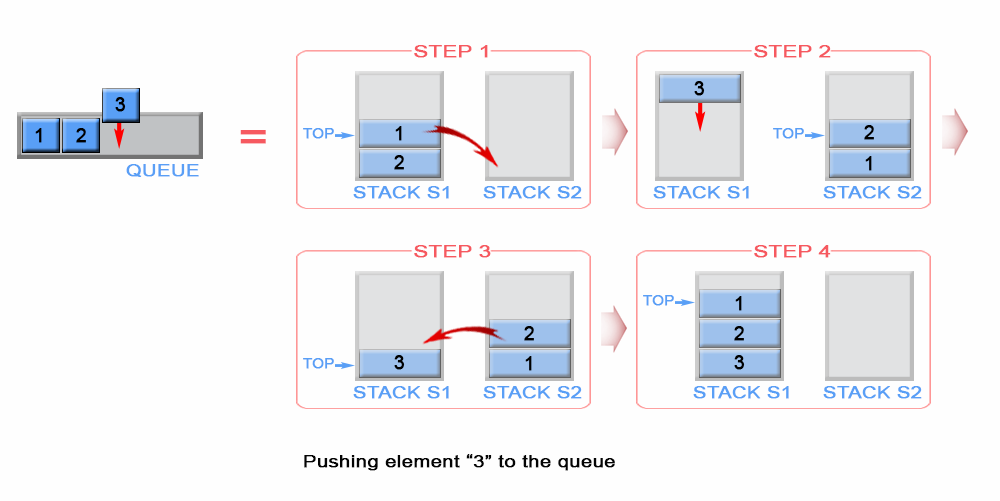【LeetCode & 剑指offer刷题】栈与队列题2:9.2 用栈实现队列(232. Implement Queue using Stacks)
【LeetCode & 剑指offer 刷题笔记】目录(持续更新中...)
232. Implement Queue using Stacks
Implement the following operations of a queue using stacks.
-
push(x) -- Push element x to the back of queue.
-
pop() -- Removes the element from in front of queue.
-
peek() -- Get the front element.
-
empty() -- Return whether the queue is empty.
Notes:
-
You must use only standard operations of a stack -- which means only push to top, peek/pop from top, size, and is empty operations are valid.
-
Depending on your language, stack may not be supported natively. You may simulate a stack by using a list or deque (double-ended queue), as long as you use only standard operations of a stack.
-
You may assume that all operations are valid (for example, no pop or peek operations will be called on an empty queue).
_files/232_queue_using_stacksBPush.png)

/*
问题:用栈实现队列
方法:用两个栈
插入 s1借助辅助栈s2将元素插入到栈底
删除 s1栈顶元素pop
访问 访问s1栈顶元素
判断 判断s1是否为空
Two Stacks, push O(n), pop O(1)
*/
class MyQueue
{
private:
stack<int> s1; //主栈
stack<int> s2; //辅助栈
public:
/** Initialize your data structure here. */
MyQueue()
{
}
/** Push element x to the back of queue. */
void push(int x)
{
while (!s1.empty()) //s1转移到s2
{
s2.push(s1.top());
s1.pop();
}
s1.push(x);//在s1中插入元素(处在栈底位置)
while (!s2.empty()) //s2转移回s1
{
s1.push(s2.top());
s2.pop();
}
}
/** Removes the element from in front of queue and returns that element. */
int pop()
{
int top_element = s1.top();
s1.pop();
return top_element;
}
/** Get the front element. */
int peek()
{
return s1.top();
}
/** Returns whether the queue is empty. */
bool empty()
{
return s1.empty();
}
};
/**
* Your MyQueue object will be instantiated and called as such:
* MyQueue obj = new MyQueue();
* obj.push(x);
* int param_2 = obj.pop();
* int param_3 = obj.peek();
* bool param_4 = obj.empty();
*/


